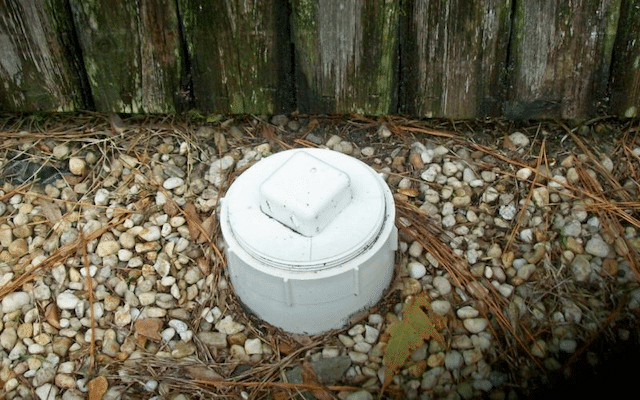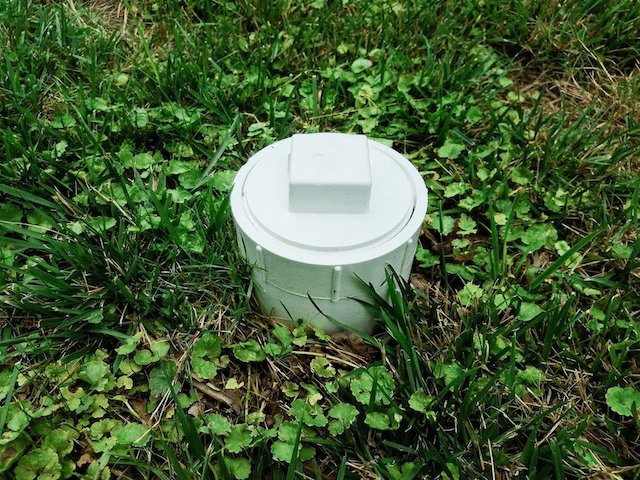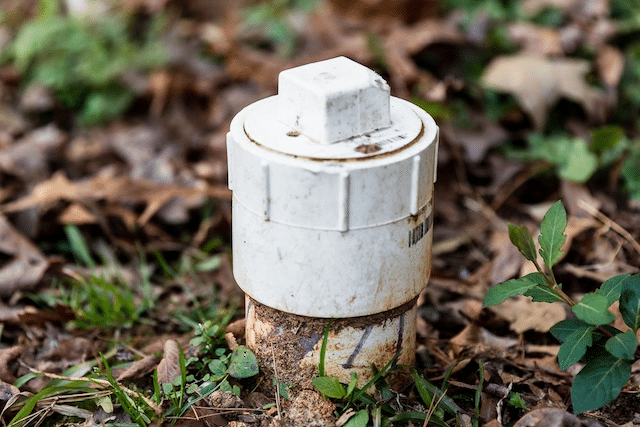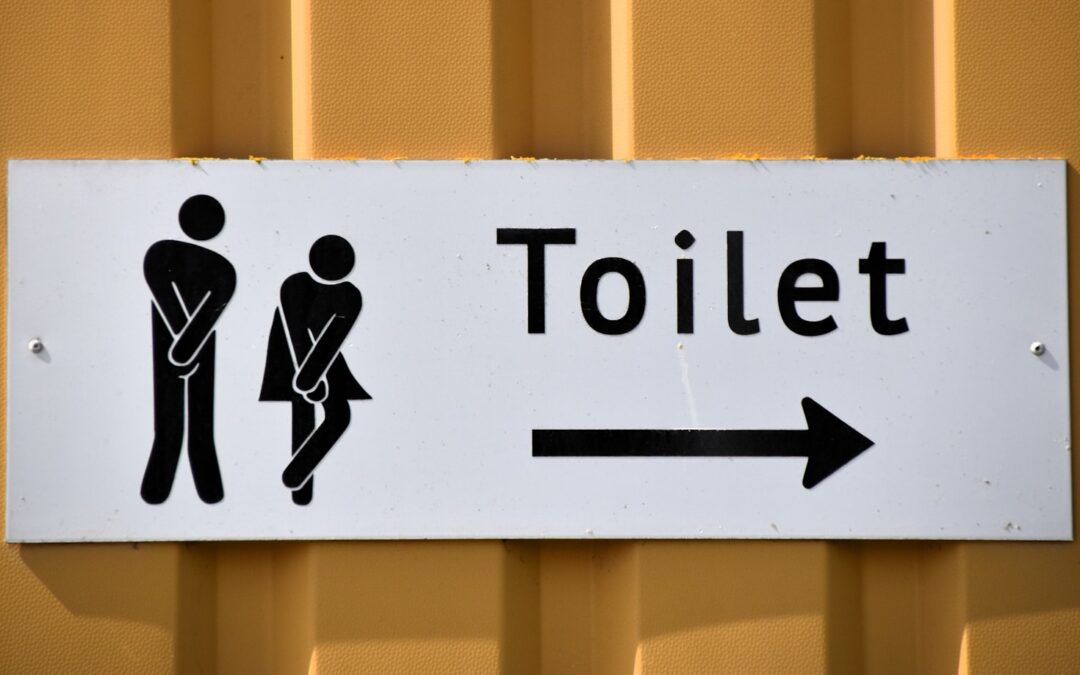Have you ever thought about what happens to all the water and waste that goes down your home’s drains? It has to go somewhere, right? Well, most of the time, it flows through a system of pipes to a municipal sewer system. But what happens when there’s a sewer line clog?
That’s where a sewer cleanout comes in! In this article, we’ll explain what a Sewer/drain cleanout is, how it works, and why you should consider having one installed in your home.
What Is A Sewer Cleanout?

Schedule Service Online
Get a free estimate so you know what you're signing up for
"*" indicates required fields
For Emergency Services Call: 410-255-9300
A drain cleanout is a plumbing fixture located on the exterior of your home that allows you to snake out or clean your home’s drainage system. Knowing where your drain cleanout is and how to use it can save you from costly plumbing repairs. The sewer cleanout provides access to the main sewer line from inside or outside the home. It is also known as the main house trap and a sewer cleanout when it is indoors.
The purpose of having a cleanout is to have an easily accessible point for plumbing professionals so they can reach clogs or sewage backup in the main line extending from the foundation, under the ground, and out to the municipal sewage system, private septic tank, or downstream of the house trap. Essentially, it provides easier access for plumbers without digging up your entire front lawn.
Knowing the location of your drain cleanout can be helpful during an emergency clog or backup. In some cases, this knowledge could save you thousands in cleaning and restoration costs. Moreover, plumbing companies may charge less for their services if they know that the homeowner is familiar with the drain cleanout location.
What Does A Drain Cleanout Look Like?
The diameter of a drain cleanout pipe is 3, 4, or 6 inches. It is commonly white or black in color. ABS plastic has become the material of choice for sewer lines, drain cleanouts, plugs, and caps, though there are still 76 million homes in America that have cast iron sewage lines with brass or cast iron drain cleanouts.
Although brass and copper drainage lines are less common, some homes may have them. When you follow these next steps to look for the main drain or plumbing cleanout, make sure to keep your sewer line material in mind.
Things To Keep In Mind When Searching For A Drain
The general location of the drain cleanout will differ depending on the local climate, so keep that in mind before you begin.
- If you live in a colder climate and your home was built on a slab foundation, you will probably have your outdoor drain cleanout located in a bathroom, garage, or utility room. As such, you may need to search both indoors and outdoors for it.
- Most homes in colder climates have drain cleanouts located inside the home.
- Homes located in warm climates will typically have an outdoor drain cleanout situated in the yard.
What You’ll Need
- A source of light ( Flashlight)
- A Screwdriver
- 1 Pair Disposal Rubber Gloves
- A pipe wrench
How To Locate An Indoor Sewer Cleanout

Below, we’ve outlined the steps you need to take to locate an indoor sewer line cleanout.
First, Follow the Drainage Pipes to Your Main Sewage Line
Most homes have several drainage pipes that run from each sink, toilet, and water-based appliance to the main sewage line. These pipes are generally black or white ABS, cast iron, copper, or bronze. To find the main sewage line in your home, follow these steps: locate a drain pipe leading away from a sink, toilet, or appliance; identity what type of material the pipe is made of; look for similar materials running throughout your home – this should be the main drainage system.
Next, Try And Find A T Or Y-Shaped Pipe Fitting With a Cap or Plug
The drain cleanout is most likely to be located indoors on the main sewage line just before it meets your home’s foundation. It will appear as a T- or Y-shaped pipe fitting with a threaded plug and square nut, which may also have a plastic cap surrounding it.
However, the drain cleanout isn’t always installed on the main line. There are some homes that may have alternate access points to the sewage system, such as a black or white pipe with a threaded plug and square nut.
Check Your Bathrooms, Utility Rooms, And The Garage
If the sewer cleanout is not on the main sewer line, then you will need to inspect alternate locations around the home. Grab a flashlight to help you see better in dimly lit areas. The drain cleanout will often be close to a cluster of drainage pipes, like a full bathroom with drains for the sink, toilet, and shower.
Inspect each bathroom in your home carefully until you find a capped black or white ABS plastic drain line; this is likely where the cleanout pipe is located. If the drain cleanout isn’t in the bathrooms, it’s a good idea to check the utility room or garage.
Sometimes, homeowners who had renovations done may have hidden the main drain cleanout. If you’re unsure, Contacting a professional plumber is always advised to help locate the drain cleanout without causing damage to your home.
Test The Drain Cleanout Plug
After you’ve located the drain cleanout, it’s time to test the plug to ensure that it is functional. To do this, you will need a screwdriver and a pair of gloves. First, use the screwdriver to remove the sewer cleanout cap or plug from the cleanout fitting. If there is resistance, do not force it – you may damage the fitting. Next, put on gloves and look down the drain cleanout to see if the water is draining. If water is flowing out of the cleanout, this is a good sign that the plug is functional.
Use A Pipe Wrench To Tighten or Loosen The Plug
If the plug is not functioning properly, you may need to use a pipe wrench to loosen or tighten it. If the plug is too loose, water will leak out of the drain cleanout. If the plug is too tight, you may not be able to remove it when you need to use the cleanout.
Locating Outdoor Drain Cleanouts
Below, we discuss how to locate outdoor drain cleanouts.
Take A Walk to the Septic Tank or Municipal Sewer Line
To locate an outdoor drain cleanout, walk to the septic tank or municipal sewer line. You’ll be able to tell which is which by either the nearest manhole or a curb with an “S” stamped into it.
Once you get there, try and estimate the direction of the drain line. The drain cleanout for septic systems is usually located next to the home and in line with the septic tank. To find it, walk back from the tank towards your house until you see a plastic pipe sticking up out of the lawn or garden.
Municipal wastewater system drain cleanouts will typically be close to the home. They should follow the path of the municipal sewer system, but because you cannot see the drainage line, you’ll need to trace a broad area through your yard until you find the pipe. These sewer pipes are often white or black in color and will be about four inches in diameter. The cleanout should have a green or white plastic cap, which may also be buried.
Move Lawn Decorations, Foliage, And Other Obstacles
If you cannot find the drain cleanout, it might be hidden from sight on purpose or by accident. The drain cleanout should be close to your home in an area along the main sewer or septic line, which can often be indicated by a group of drain pipes in full or partial bathrooms.
Start by removing any lawn decorations that are blocking the view of the yard outside the bathrooms. As you go, expand your search area. Keep in mind that the cleanout could be hidden in a garden or camouflaged by plants. Long grass can also make it difficult to find, so you may want to mow the lawn to help with the search process.
If the sewer cleanout is buried in your yard, you will need to estimate where the drainage line enters and use a long screwdriver to probe into the ground about 1 inch. However, this method is essentially trial and error. Even if you make a good guess, you may want to consider hiring a professional to locate the drain cleanout.
Mark And Test The Drain Cleanout
Use a metal stake with a brightly colored flag to mark the location of the drain cleanout so that you have an emergency reference point.
Lastly, test to see if the drain cleanout plug can be removed. Do so by using a pipe wrench or large channel locks to unscrew the nut from the pipe. The nut shouldn’t require too much effort to remove, but If water starts rushing out or you feel pressure in the line, retighten the nut and call a plumber for further assistance.
Conclusion
Drain cleanouts are an important part of any home’s plumbing system. They provide a way to access the drain line and clean it out if necessary. Cleanouts are typically located near the home, often in the yard near a group of bathroom drains. They may be hidden by lawn decorations, foliage, or other obstacles. If you cannot find the cleanout after following all the steps in this article, call a professional plumber for assistance.
Need A Plumber? Contact Us
If you’re in need of a plumbing professional to help you with your home’s sewer cleanout, don’t hesitate to contact us. We would be happy to come out and take a look at your issue and provide an estimate.




